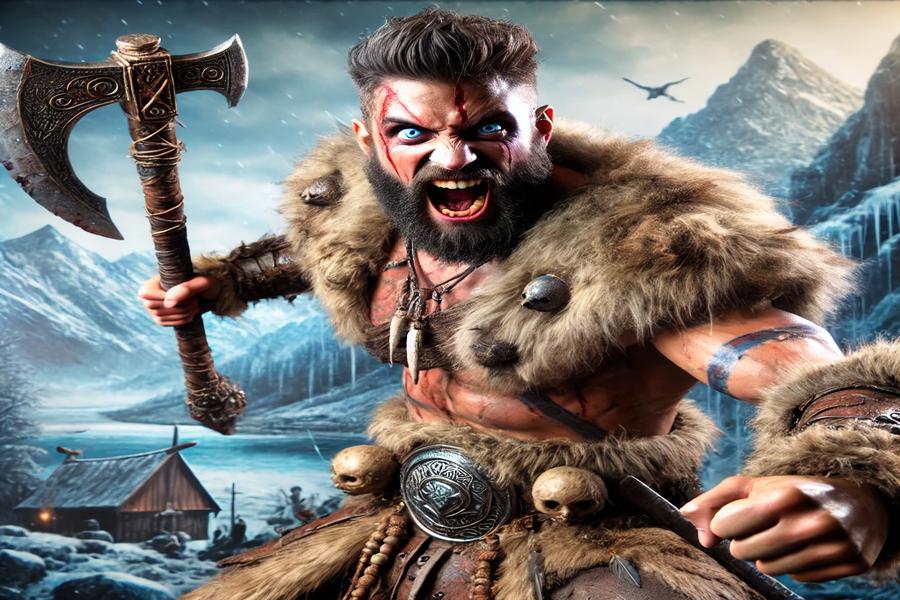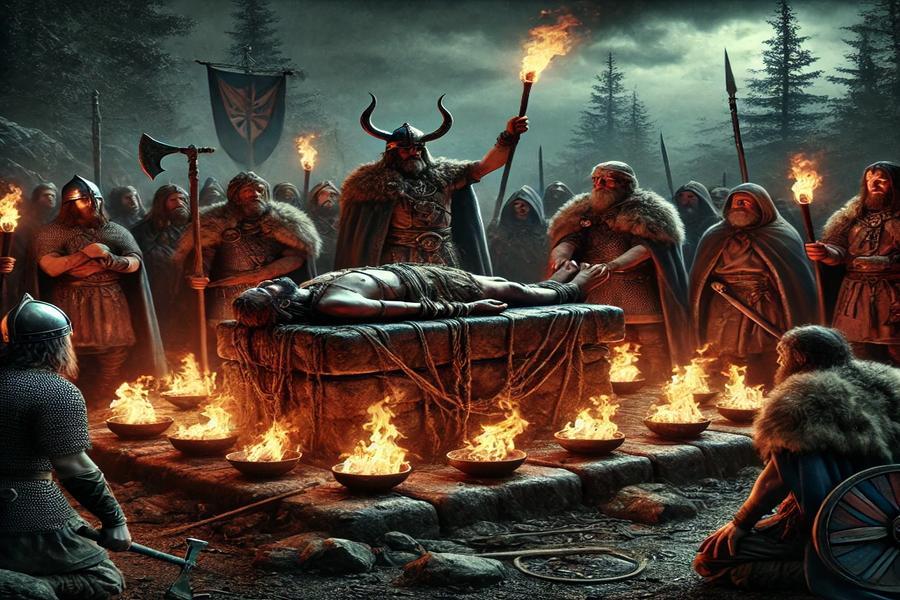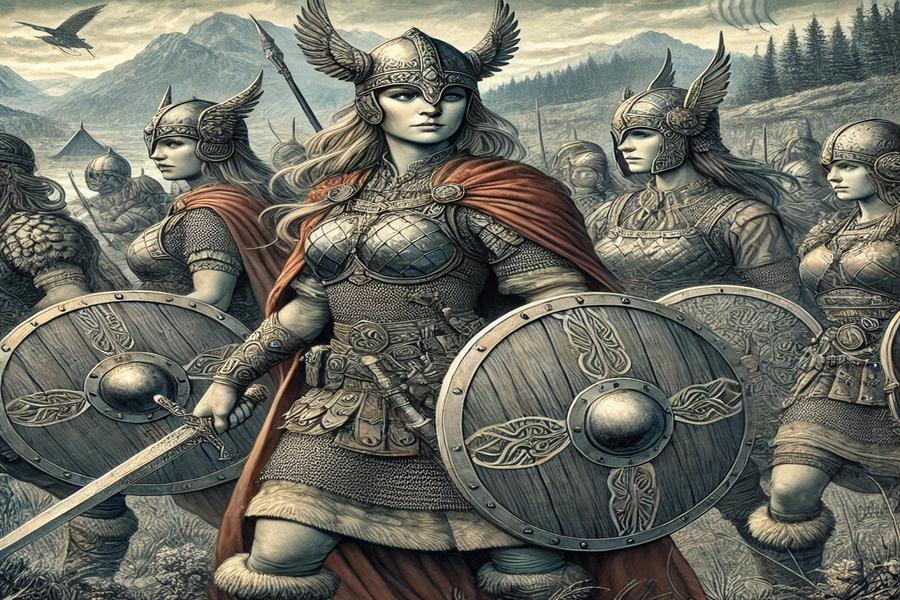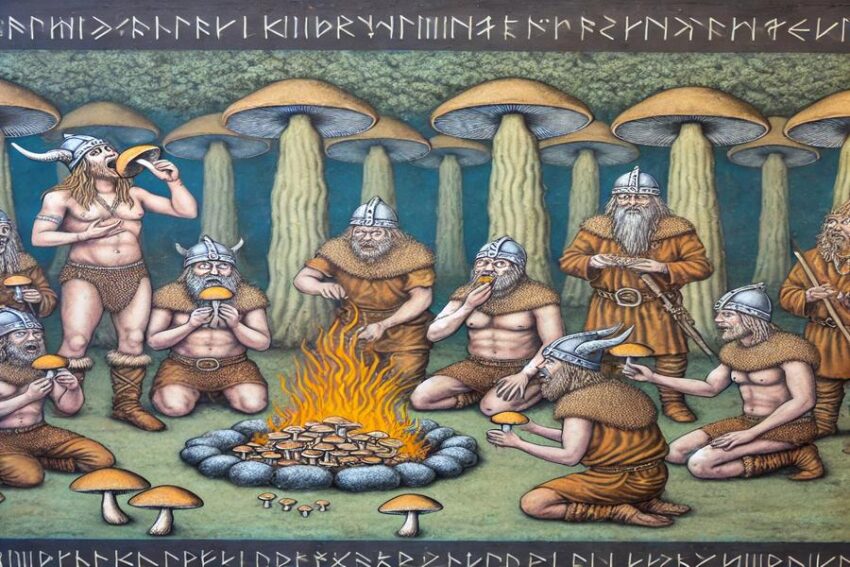Table of Contents
13 Bizarre Viking Customs & Habits
The Vikings, known for their seafaring and warrior culture, also had a range of unique and often bizarre habits that set them apart from other historical groups. Their daily lives, social customs, and rituals shaped their environment and beliefs, creating a fascinating and sometimes strange cultural tapestry. Here are 13 bizarre Viking customs & habits that highlight the intriguing aspects of their lifestyle.
1. Blood Eagles
One of the most brutal Viking execution methods was the “blood eagle,” an execution where the victim’s ribs were severed from their spine, and their lungs were pulled out through the back to form “wings.” This gruesome practice was believed to honor the god Odin. The punishment would be used for the most severe crimes, such as betrayal.
2. Berserkers
Viking warriors known as berserkers would enter a trance-like fury before battle, often fighting with wild, uncontrollable rage. They believed they were possessed by animal spirits, bears, or wolves, which gave them supernatural strength and ferocity.

3. Rune Casting
Vikings used rune stones for divination, casting them to predict the future or seek guidance. Each rune had specific meanings and magical properties, and patterns formed, were interpreted by seers.
4. Seiðr (Sorcery)
Practitioners of seiðr, a form of Norse sorcery, performed rituals to alter fate, foresee the future, or communicate with spirits. Both men and women could practice seiðr, though it was more commonly associated with women known as völvas.
5. Human Sacrifice
The Vikings believed that sacrificing humans, particularly during times of crisis or significant events, could appease the gods and ensure favorable outcomes. These sacrifices were often performed during religious ceremonies and festivals.

6. Tooth Filing and Tattooing
Some Vikings filed horizontal grooves into their teeth and filled them with dye to create a fierce appearance. They also adorned their bodies with tattoos, often depicting Norse mythology, animals, and intricate designs, to display their cultural identity and bravery.
7. Eating Hallucinogenic Mushrooms
Before battle, some Viking warriors consumed hallucinogenic mushrooms, such as Amanita muscaria, to induce altered states of consciousness. This practice likely contributed to their berserker rages and fearless combat style.
8. Ship Burials
High-ranking Vikings were sometimes buried in their ships, with goods, and weapons, and sometimes sacrificed animals and slaves. These ship burials were meant to ensure safe passage to the afterlife and reflect the deceased’s status and wealth.

9. Skaldic Poetry
Vikings highly valued skaldic poetry, a complex and elaborate form of verse used to commemorate heroic deeds, gods, and legends. Skalds, the poets who created these works, were highly respected and often served as advisors to chieftains and kings.
10. Shieldmaidens
While the existence of Viking shieldmaidens—women who fought alongside men in battle—is debated, some sagas and historical accounts suggest that women did participate in combat. These warrior women defied traditional gender roles and became legendary figures.

11. Yule Celebrations
The Vikings celebrated Yule, a midwinter festival where they feasted, drank, and particpated in rituals to honor the gods and ancestors. Many Yule customs, such as decorating with evergreens and burning Yule logs, have influenced modern Christmas traditions.
12. Lifelong Oaths
Vikings took oaths of loyalty and brotherhood very seriously, often swearing lifelong allegiance to their chieftains, gods, or each other. Breaking an oath was considered a grave offense, sometimes punishable by death.

13. Using Urine for Dyeing
Vikings used stale urine as a mordant in the dyeing process for their clothes. The ammonia in the urine helped fix the dyes to the fabric, resulting in more vibrant and long-lasting colors. This practice highlights their resourcefulness and knowledge of natural materials.
Conclusion
These 13 bizarre Viking habits provide a glimpse into the unique and sometimes unsettling aspects of Viking culture. From their brutal rituals and fierce warriors to their sophisticated artistry and spiritual practices, the Vikings were a complex and multifaceted people. Exploring these customs helps us better understand the rich tapestry of their society and the legacy they left behind.
Have you seen:
